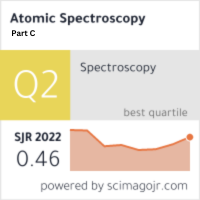Evaluation of metal resistance, uptake capacity and metal toxicity reduction by multimetal resistant bacteria as bioremediation agents for heavy metals
Keywords:
Heavy metals; multimetal resistant bacteria; bacterial growth; metal uptake; consortium; bioremediation; toxicityAbstract
This paper is based on the removal of toxic heavy metals from polluted water bodies by effluent to halt and reduce pollution from being transported further into the environment. Biological removal method of these toxic heavy metals depending on metal-resistant bacteria are considered a more beneficial and inexpensive alternative that is of interest to be pursue. The capability of nine bacterial isolates isolated from electroplating effluent to tolerate and absorb toxic metals of zinc, chromium, copper, nickel individually and quaternary at high concentrations was evaluated when isolates were single and consortium. The highest concentration that bacteria were able to tolerate was used to determine the correlation between metal uptake and bacterial growth. Using the metal toxicity index B (L/mg) and its inverse (1/B, mg/L) on each individual bacterium, the toxicity limits and tolerance of metals were calculated. The isolates were more resistant and grew better at 100 mg/L, but growth was reduced and resistance declined at 300 mg/L, more toxicity and growth discontinued at 500mg/L for most metals. All isolates demonstrated ability to grow and uptake metals, but consortium exhibited perfect ability of metal uptake and resist compared to individual isolates. The consortium was able to flourish and compete within a united microbial community, which resulted in apparent increase in metal removal capability. The findings revealed no statistically significant correlation between metal uptake and growth. The isolates established the feasibility of employing them to remove heavy metals and support the development of an integrated system for treating metal pollutants bacterium-based.



